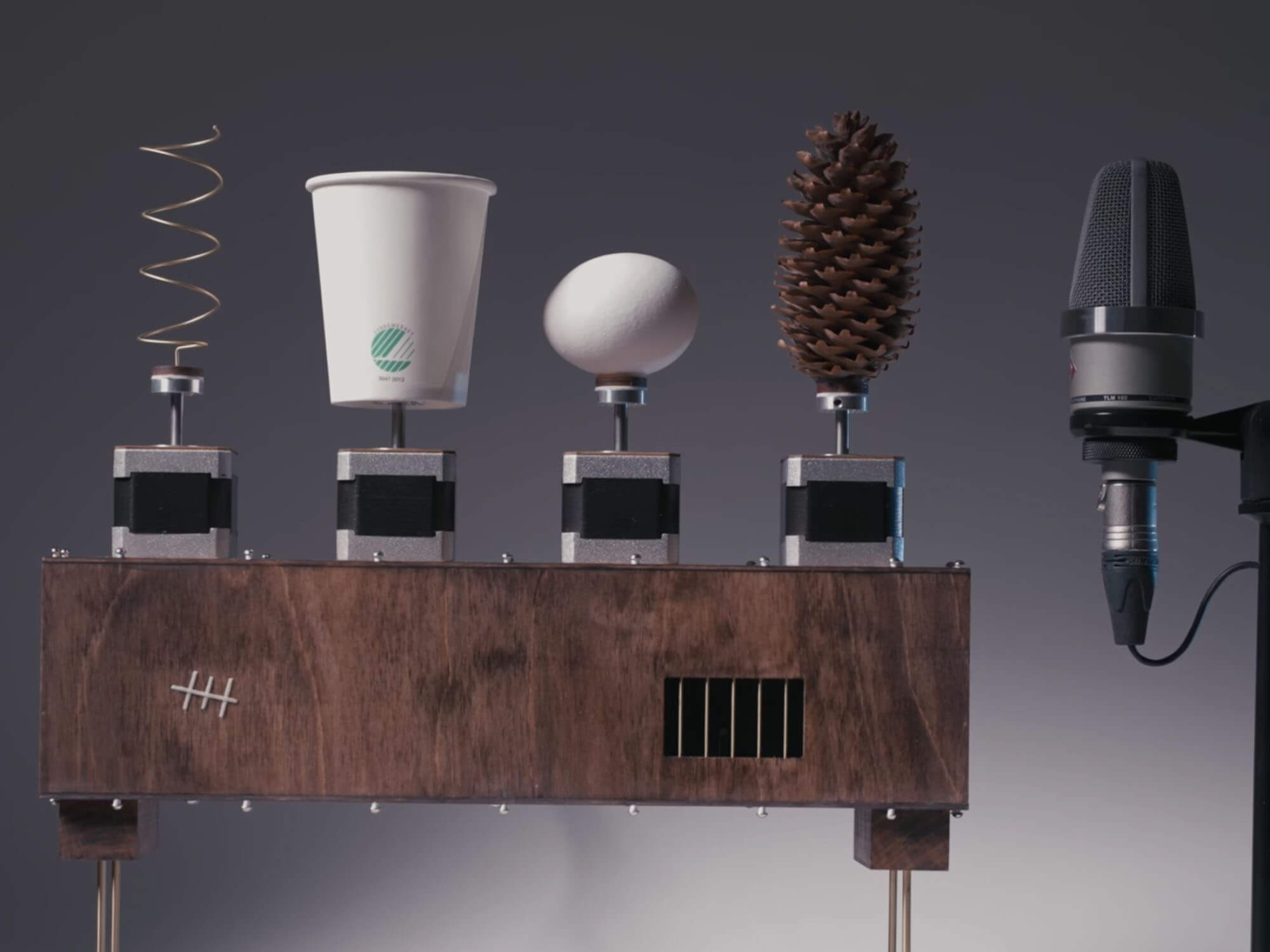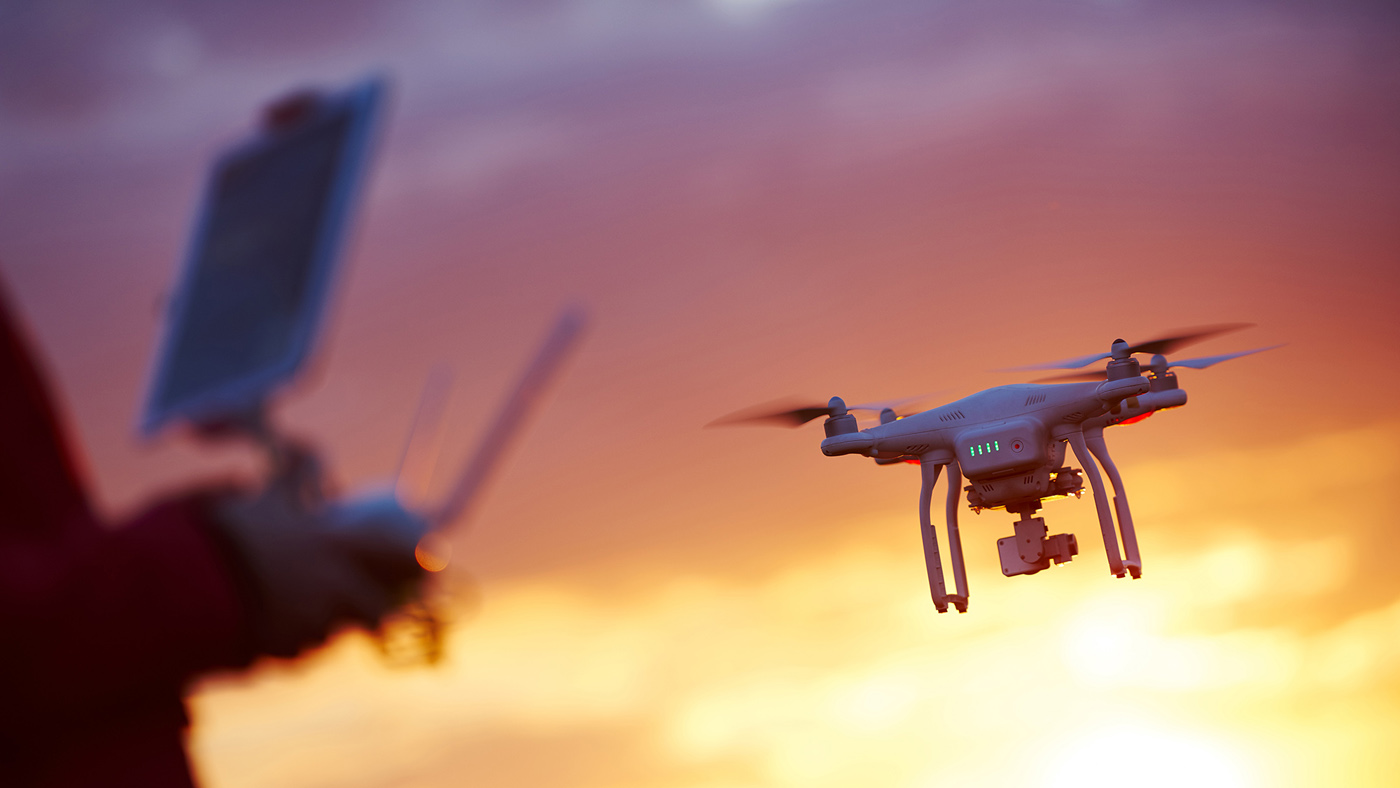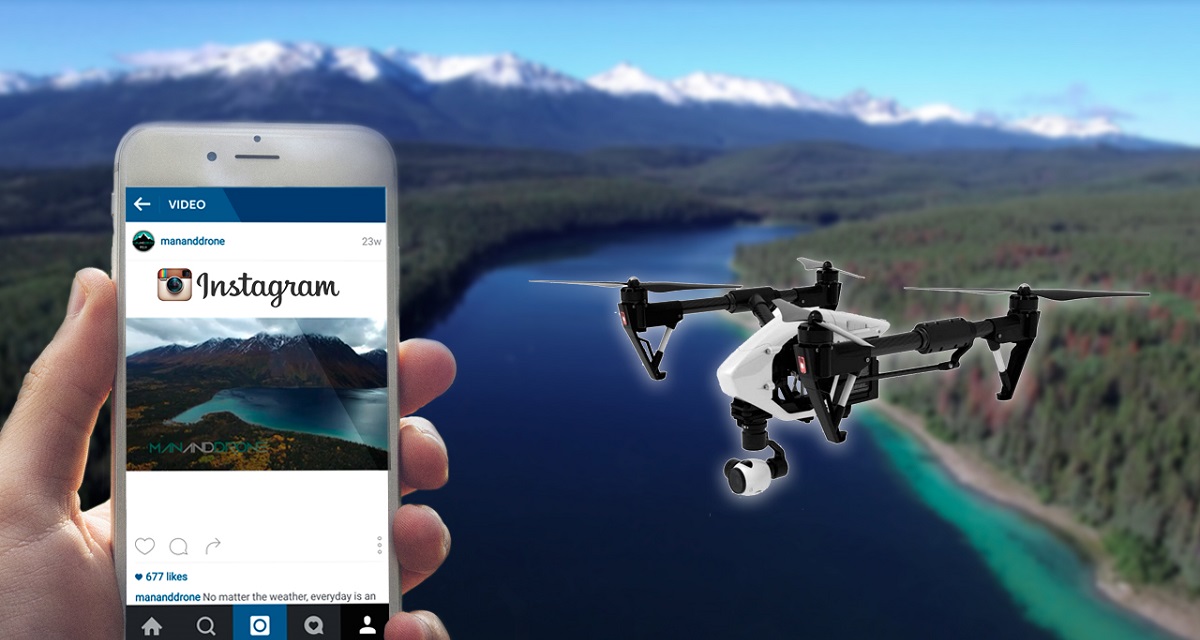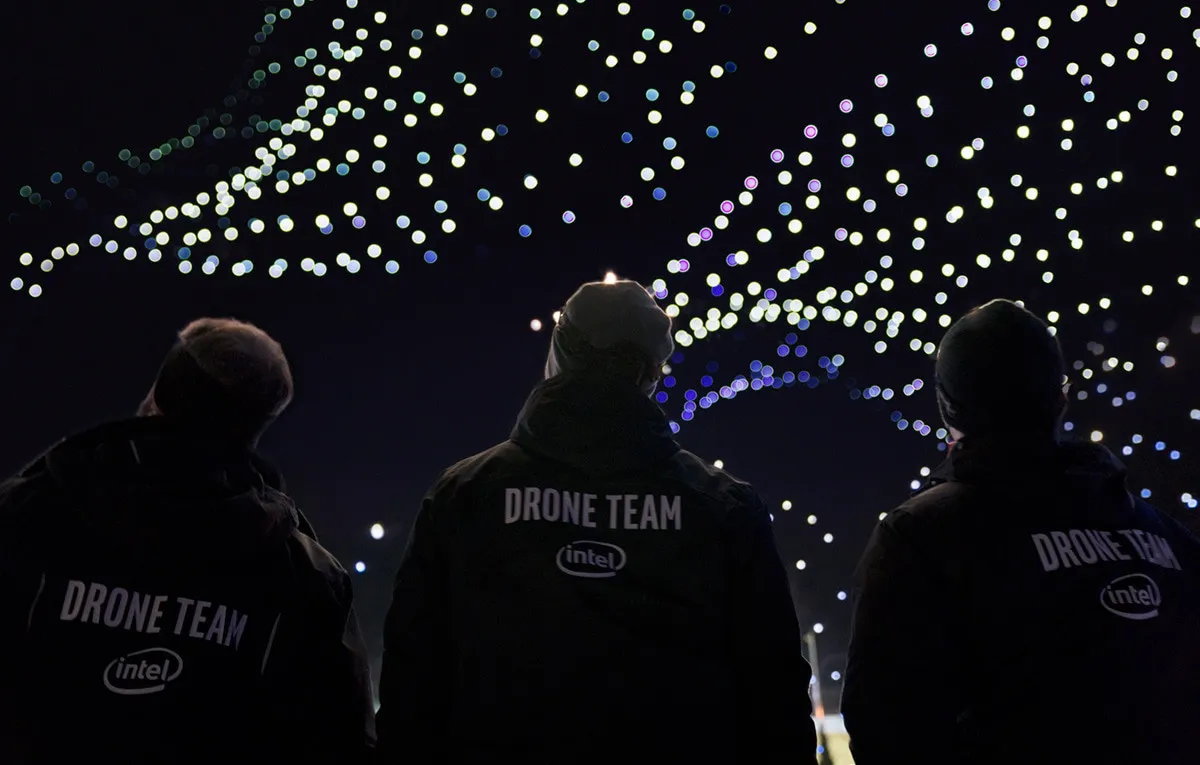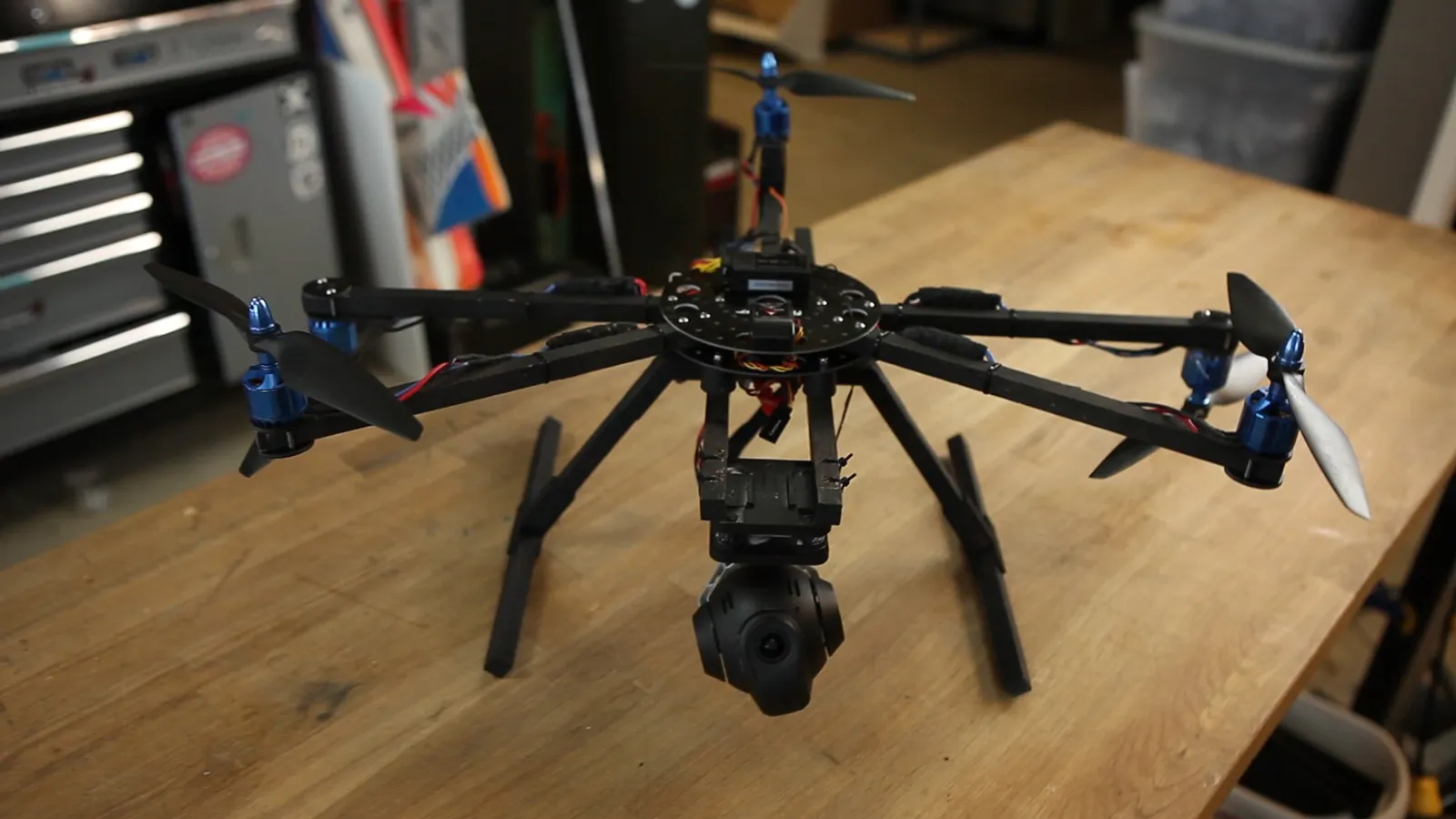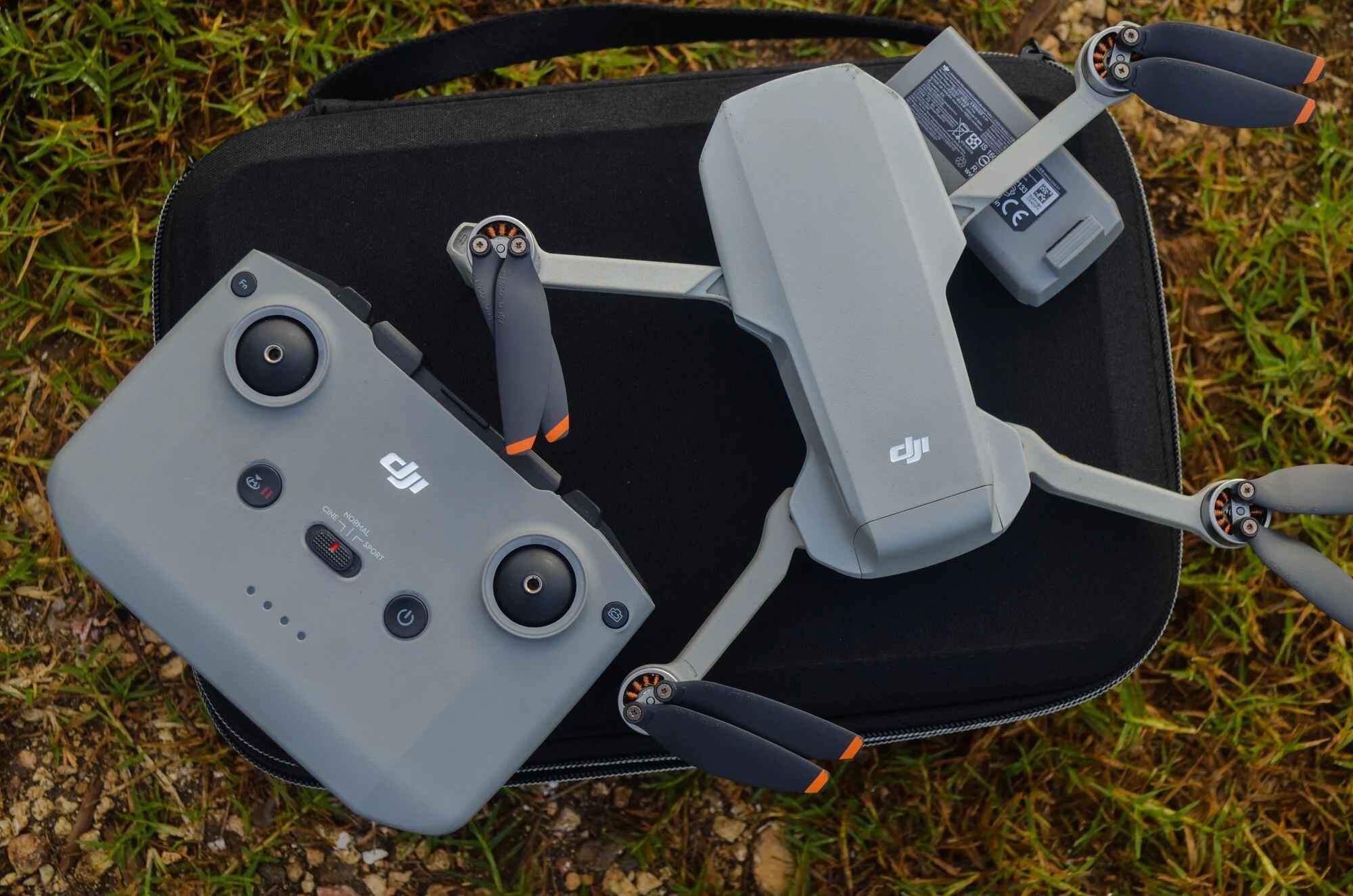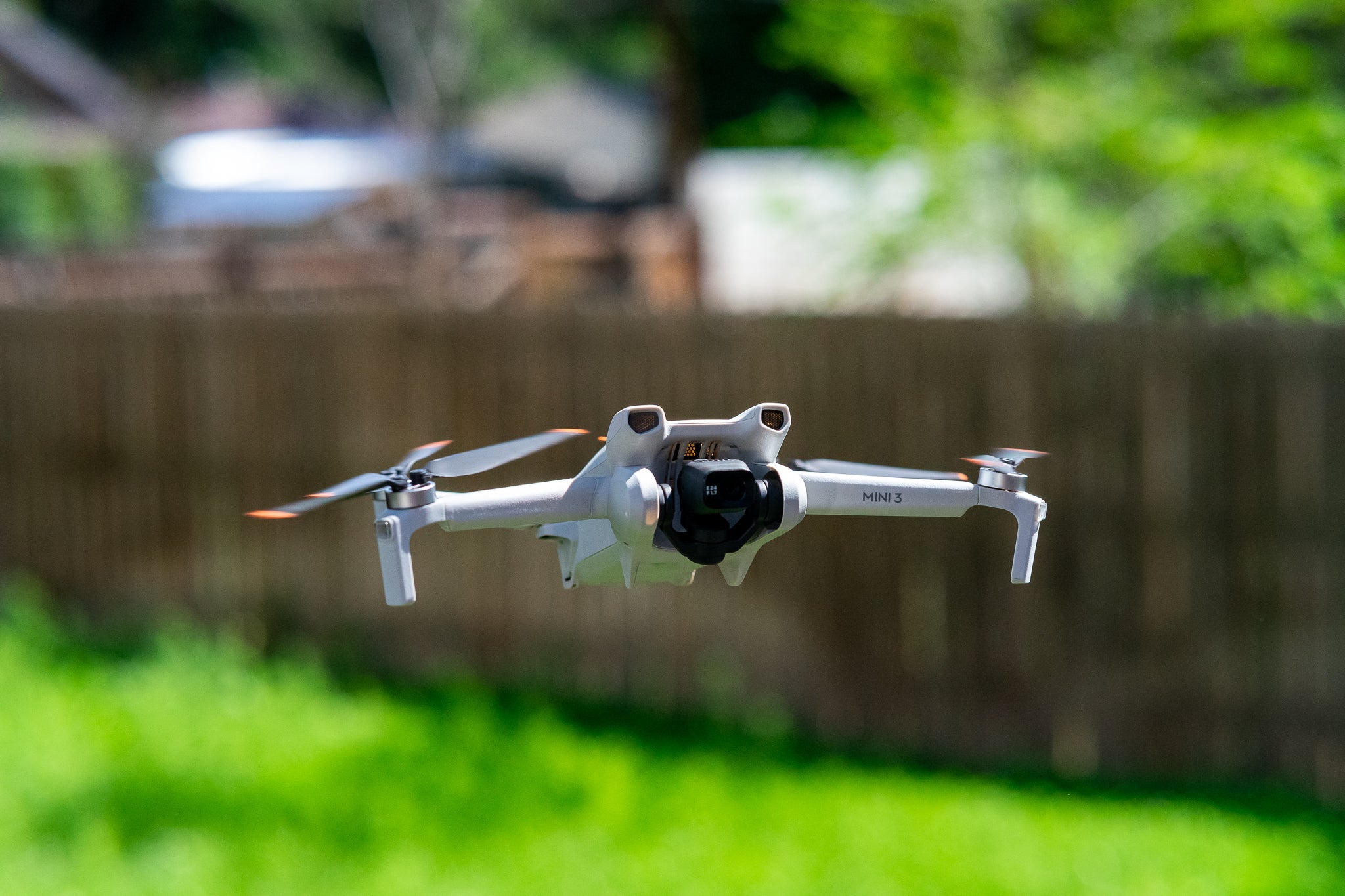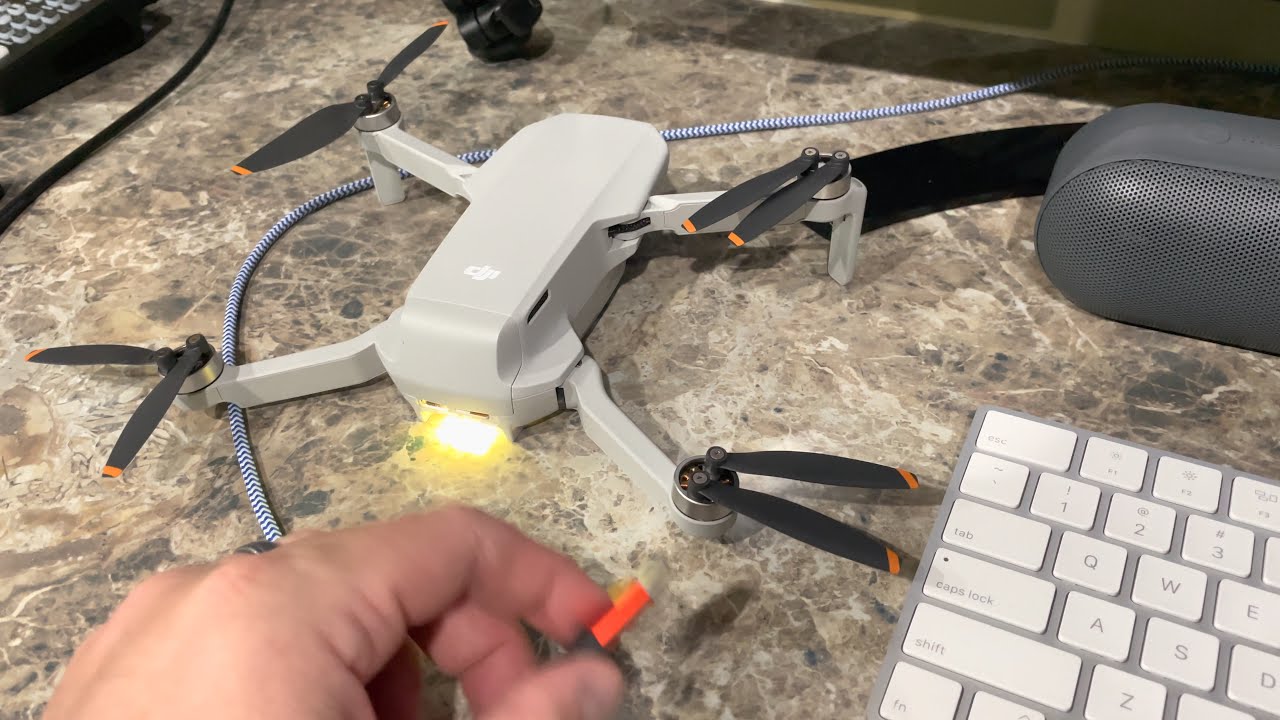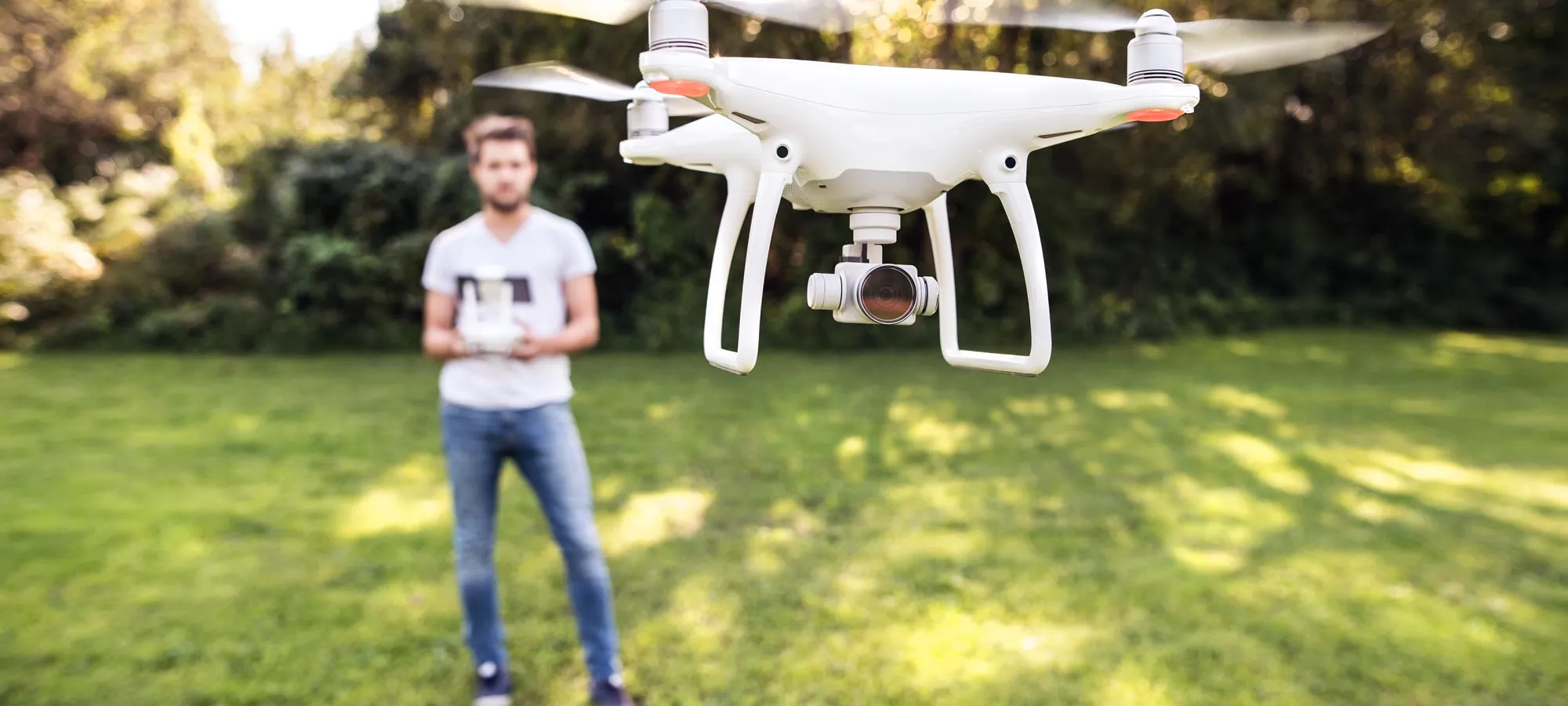Introduction
Welcome to the fascinating world of drone music! Whether you’re an aspiring musician, a curious listener, or a seasoned producer looking to explore a new genre, this guide will take you on a journey to discover the art of creating captivating drone music.
Drone music is known for its immersive and hypnotic quality, often characterized by sustained sounds and minimalistic compositions. It can evoke a wide range of emotions and create an otherworldly atmosphere that captivates the listener’s attention. From ambient and experimental to meditative and introspective, drone music offers endless sonic possibilities.
But what exactly is drone music? At its core, drone music focuses on the exploration of sustained tones or drones that evolve and interact over time. It embraces the concept of extended duration, allowing for a deep listening experience where subtle changes and variations become apparent. It can be created using various instruments, including synthesizers, guitars, and even your own voice.
In this guide, we will walk you through the process of creating mesmerizing drone music from start to finish. You’ll learn about the essential equipment needed to get started, gain an understanding of the characteristics and techniques that define drone music, explore the art of crafting haunting drone sounds, and discover how to compose and record your own immersive drone music compositions.
Whether you’re a beginner with no prior musical experience or an experienced musician looking to dive into the world of drone music, this guide will provide you with a solid foundation to unleash your creativity and explore the depths of this unique genre. So, let’s embark on this sonic adventure and unlock the mesmerizing power of drone music.
Getting Started
If you’re new to the world of drone music, getting started may seem a bit daunting at first. But fear not! This section will guide you through the essential steps to embark on your drone music journey.
1. Familiarize Yourself with Drone Music: Before you begin creating your own drone compositions, take some time to listen to different examples of drone music. Explore the works of renowned artists in the genre such as Brian Eno, Stars of the Lid, and Eliane Radigue. Pay attention to the characteristics of the sounds, the structure of the compositions, and the emotions they evoke.
2. Acquire the Necessary Equipment: To create drone music, you’ll need the right tools. While you can experiment with various instruments and equipment, a good starting point is a synthesizer or a digital audio workstation (DAW) with virtual instruments that can produce sustained sounds. Some popular options include the Moog Mother-32, Korg MS-20, or software synths like Native Instruments Massive.
3. Learn Basic Music Theory: Familiarity with basic music theory will greatly enhance your ability to create compelling drone compositions. Brush up on concepts such as scales, intervals, and chords. While drone music is often minimalistic, having a foundation in music theory will help you make informed creative decisions.
4. Experiment with Sound Design: Dive into the world of sound design and explore different ways to create captivating drone sounds. Experiment with synthesizer parameters like oscillators, filters, and envelopes to shape your drone tones. Don’t be afraid to experiment and push the boundaries of conventional sound creation.
5. Embrace Patience and Exploration: Drone music is all about embracing the process and exploring the sonic possibilities. It is a genre that rewards patience and experimentation. Allow yourself the freedom to explore different sounds, textures, and arrangements. Remember, there are no strict rules – let your intuition be your guide.
6. Seek Inspiration and Collaboration: Engage with the drone music community and seek inspiration from fellow artists. Attend concerts, workshops, or online forums to connect with like-minded individuals. Collaborating with other musicians can also provide fresh perspectives and push your creative boundaries.
By following these steps, you’ll be well on your way to diving into the world of drone music. Embrace the journey, experiment with different techniques, and allow your creativity to soar. In the next section, we’ll delve deeper into the process of choosing the right equipment for creating your drone music.
Choosing the Right Equipment
When it comes to creating drone music, choosing the right equipment is crucial. The right tools will help shape your sound and elevate your compositions. Here are some important considerations to keep in mind:
1. Synthesizers: Synthesizers are the cornerstone of drone music production. Analog synthesizers like the Moog Subsequent 37 or the Dave Smith Instruments Prophet-6 offer warm and rich sounds. Digital synthesizers such as the Korg Minilogue or the Arturia MicroFreak provide a wide range of tones and possibilities.
2. Modular Synthesizers: For those looking for more experimentation and customization, modular synthesizers offer unparalleled flexibility. Eurorack systems like Mutable Instruments Plaits or Make Noise Maths allow for creating complex and evolving drone sounds by interconnecting various modules.
3. Effects Processors: Effects processors play a vital role in shaping the tone and texture of drone music. Delays, reverbs, and granular processors like the Strymon BigSky or the Eventide H9 add depth and atmosphere to your drone sounds. Experiment with different effects chains to create unique sonic landscapes.
4. Field Recordings: Incorporating field recordings into your drone compositions can add an organic and immersive layer to your soundscapes. Consider investing in a high-quality portable recorder like the Zoom H5 or the Tascam DR-40X to capture interesting ambient sounds or natural environments.
5. Virtual Instruments: If budget or portability is a concern, virtual instruments can be a great option. DAW plugins like Native Instruments Kontakt or Spectrasonics Omnisphere offer vast libraries of sounds, including drones and atmospheric textures.
6. Controllers: Having a tactile control surface can greatly enhance your creative workflow. MIDI controllers like the Ableton Push or the Novation Launchpad allow for real-time manipulation of parameters, making it easier to shape your drone sounds on the fly.
7. Audio Interfaces: An audio interface is essential for capturing the highest quality recordings of your drone music. Look for interfaces with a high-quality preamp, multiple inputs/outputs, and low-latency performance, such as the Focusrite Scarlett series or the Universal Audio Apollo series.
Remember, the equipment you choose should not limit your creativity but rather inspire and enable you to explore new sonic territories. Consider your budget, preferences, and artistic vision when making your equipment choices. Now that you have an understanding of the equipment necessary for creating drone music, let’s move on to the next section, where we’ll explore the essence of drone music and how to create basic drone sounds.
Understanding Drone Music
Before delving into the creation of drone music, it’s important to grasp the essence and characteristics of this genre. Drone music is a minimalist form of music that focuses on sustained tones or drones that evolve gradually over time. Here are some key aspects to understand:
1. Sustained Tones: At the heart of drone music are sustained tones or drones, which are prolonged sounds with minimal variations. These drones can be created using various instruments or even through electronic synthesis. The continuous nature of the drones creates a sense of immersion and deep listening experience.
2. Minimalism and Repetition: Drone music often embraces minimalism and repetition. Instead of complex melodies or chord progressions, the emphasis is on creating a meditative and hypnotic atmosphere through the repetition of simple motifs or harmonies. This allows the listener to focus on the nuances and subtle variations in the sound.
3. Texture and Layers: Texture plays a vital role in drone music. By layering different drone sounds or adding subtle variations, you can create a rich and evolving sonic palette. Experiment with the combination of different timbres, frequencies, and spatial positioning to create depth and dimension in your compositions.
4. Time and Duration: Drone music is often associated with extended durations. It invites the listener to enter a sonic journey that gradually unfolds over time. Unlike traditional song structures with distinct sections, drone music focuses on creating a continuous flow of sound that can be experienced over an extended period.
5. Emotional and Spatial Exploration: Drone music has the power to evoke a wide range of emotions and responses in the listener. It can create a sense of tranquility, awe, introspection, or contemplation. It also has the ability to transport the listener to different sonic landscapes or imaginary spaces, allowing for a transformative experience.
6. Experimentation and Improvisation: Drone music encourages experimentation and improvisation. It provides a platform for exploring unconventional techniques, unconventional instruments, and unconventional sounds. Embrace a spirit of exploration and allow yourself to push the boundaries of what is considered ‘musical’ to discover unique and captivating sonic results.
Understanding the elements and characteristics of drone music will guide you in your creative process. In the next section, we’ll dive into the techniques for creating basic drone sounds, giving you the fundamental building blocks to craft your own immersive drone compositions.
Creating Basic Drone Sounds
Creating captivating drone sounds is an essential skill for crafting immersive drone music. By manipulating tone, texture, and modulation, you can achieve a wide range of drone sounds. Here are some techniques to get you started:
1. Oscillator Selection: Start by selecting a suitable oscillator waveform for your drone sound. Sine waves are commonly used for clean and pure tones, while square or sawtooth waves add richness and harmonic content. Experiment with different waveforms to find the desired character for your drone.
2. Sustaining the Sound: Achieve the sustained nature of drone music by utilizing techniques such as using a low-pass filter to remove the attack portion of the sound, utilizing the hold feature on your synthesizer, or applying a drone sustain pedal. These techniques ensure that the sound continues to evolve and sustain without rapid decay or release.
3. Layering Multiple Oscillators: Create depth and richness in your drone sound by layering multiple oscillators with slightly detuned frequencies. This slight detuning adds a natural chorus-like effect, resulting in a thicker and more complex tonal texture.
4. Modulating Parameters: Experiment with modulating various parameters of your oscillator, such as pitch, amplitude, or filter cutoff frequency. Modulation adds movement and variation to your drone sound, making it more dynamic and interesting. Consider using LFOs (low-frequency oscillators) or envelopes to automate these modulations.
5. Incorporating Harmonic Overtones: Enhance the richness of your drone sound by incorporating harmonic overtones. This can be achieved by adding additional oscillators at higher octaves or using effects such as chorus or distortion to generate harmonics. Be mindful of the balance between clarity and complexity, as too many overtones can clutter the sound.
6. Spatial Effects: Experiment with spatial effects like reverb or delay to create a sense of depth and space in your drone sound. These effects can add an atmospheric quality, immersing the listener in a sonic environment. Adjust the parameters to achieve the desired level of reverberation or delay trails.
7. Embrace Microtonality: Explore microtonal intervals and unconventional tunings to bring a unique and otherworldly quality to your drone sounds. Microtonal intervals refer to intervals smaller than a semitone, allowing for more intricate and dissonant harmonic relationships.
8. Live Performance Techniques: If you’re performing your drone music live, consider incorporating techniques like manual parameter manipulation or using external controllers to control aspects of your sound in real-time. This adds an element of improvisation and allows for a more dynamic and engaging live performance.
Remember, these techniques serve as a starting point for your exploration of drone sound creation. Experiment, trust your ears, and don’t be afraid to deviate from traditional approaches. In the next section, we’ll discuss how to layer other instruments with your drone sounds to create a more complex and engaging sonic landscape.
Layering with Other Instruments
Layering other instruments with your drone sounds can add depth, complexity, and a unique sonic character to your compositions. This section explores some techniques to effectively blend other instruments with your drones:
1. Harmonic Instruments: Incorporate harmonic instruments such as guitars, pianos, or string instruments to complement your drone sounds. These instruments can add melodic or chordal elements to create a harmonic foundation for your drones. Experiment with playing sustained chords or melodic lines in tandem with your drones.
2. Textural Instruments: Explore using textural instruments like pads, ambient synths, or atmospheric samples to enhance the overall atmosphere of your drone music. These instruments can help fill out the sonic space and provide a lush backdrop for your drones. Experiment with different textures and layering techniques to achieve the desired sonic depth.
3. Percussive Instruments: Contrasting the sustained nature of drone sounds, incorporating subtle percussive elements can add rhythmic interest to your compositions. Utilize percussive instruments like bells, chimes, or hand percussion to introduce rhythmic patterns or accents that enhance the immersive quality of the drones.
4. Vocal Textures: Human voices can add a haunting and ethereal quality to your drone music. Experiment with vocal techniques such as throat singing, vocal harmonies, or extended vocal techniques to create unique textural effects. Layering vocal textures with drones can evoke a sense of spirituality or transcendence.
5. Field Recordings: Enhance the organic nature of your drone music by incorporating field recordings of natural sounds or found sounds. These recordings can provide a sense of place and context, creating a more immersive sonic experience. Consider capturing sounds like rain, wind, or everyday ambient sounds to blend with your drone compositions.
6. Experimental Instruments and Objects: Think outside the box and experiment with unconventional instruments or objects to create interesting sonic textures. Explore using materials like bows on different surfaces, contact microphones on objects, or DIY instruments to generate unique sounds that complement your drones. The possibilities are endless – let your imagination guide you.
7. Performative Elements: Infuse your compositions with performative elements – whether it’s live improvisation or carefully choreographed movements. This not only adds a visually engaging element but also allows for real-time interaction and response to the drone sounds, creating a more immersive and dynamic performance experience.
Remember, the key to successful layering is finding a balance between the different instruments and sounds. Listen attentively, adjust levels and frequencies, and ensure that each layer enhances the overall sonic experience without overpowering the drones. Now that you understand the techniques for layering instruments with your drones, let’s explore how to add effects and modulations to further shape your sound in the next section.
Adding Effects and Modulations
Effects and modulations play a crucial role in shaping and evolving the sonic landscape of your drone music. By experimenting with various effects and modulations, you can add depth, movement, and sonic interest to your compositions. Here are some techniques to consider:
1. Reverb: Reverb is one of the most commonly used effects in drone music. It adds spatial depth and creates a sense of immersion. Experiment with different reverb types, decay times, and pre-delay settings to achieve the desired ambience. Consider using longer decay times to create expansive and ethereal reverberations.
2. Delay: Adding delay can introduce rhythmic or echoing repetitions to your drone sounds. Experiment with different delay times and feedback settings to create cascading echoes or create rhythmic patterns. Play around with ping-pong or multi-tap delays to add complexity and movement to your drones.
3. Modulation Effects: Modulation effects such as chorus, flanger, and phaser can add rich and evolving textures to your drones. These effects subtly vary the pitch and timbre of the sound, creating a sense of movement and animation. Experiment with different modulation rates, depths, and feedback settings to find the perfect balance.
4. Filter Modulation: Modulating the cutoff frequency or resonance of a filter can shape the timbre and add movement to your drone sounds. Consider using low-frequency oscillators (LFOs) or envelops to automate the modulation. Slow filter sweeps can create gradual shifts in the tonal character, while faster modulations can add rhythmic variations.
5. Granular Processing: Granular processing can transform your drone sounds by splitting them into small grains and manipulating them individually. This technique adds a unique textural quality to your drones. Experiment with granular synthesis plugins or other granular processing techniques to create intricate and evolving soundscapes.
6. Panning and Spatial Effects: Manipulating the stereo field can enhance the spatial depth of your drone compositions. Experiment with panning and stereo imaging effects to create movement and immersion. Consider automating panning to simulate sounds moving across the stereo spectrum and add an extra layer of interest to your drones.
7. Modulation Pedals and Controllers: Incorporating modulation pedals or controllers into your setup can provide hands-on control over various parameters. Pedals like the expression pedal can be assigned to control parameters like modulation rate, filter cutoff, or feedback levels. This allows for real-time manipulation and expressive performance of your drone sounds.
8. Experimental Signal Processing: Don’t be afraid to experiment with unconventional signal processing techniques. Explore granular synthesis, spectral processing, sound shaping plugins, or even feedback loops to push the boundaries and create unique and otherworldly effects that add depth and character to your drone music.
Remember, the goal is to enhance and enrich your drone sounds while maintaining a sense of coherence and balance. Trust your ears and explore different combinations of effects and modulations to find the perfect sonic landscape. In the next section, we’ll discuss the art of crafting a drone music composition, where we’ll explore structure, rhythm, and arranging your drone sounds.
Crafting a Drone Music Composition
Crafting a compelling drone music composition involves careful consideration of structure, rhythm, and arrangement. While the minimalist nature of drone music allows for freedom and experimentation, thoughtful composition can guide the listener through a captivating sonic journey. Here are some key factors to consider:
1. Establishing Structure: While drone music often lacks traditional song structures, establishing a loose structure can help guide the flow of your composition. Consider dividing your composition into sections or movements, each with its own unique character or sonic exploration. Experiment with the length and order of these sections to create an engaging progression.
2. Creating Rhythmic Elements: While drones typically lack traditional rhythmic elements, introducing subtle pulses, accents, or percussive sounds can add rhythmic interest to your composition. Control the intensity and placement of these rhythmic elements to maintain the meditative quality of the drones while offering additional intrigue to the listener.
3. Balancing Dynamics: Explore dynamic variation within your composition. Gradual changes in volume, intensity, or tonal characteristics can evoke a sense of movement and development. Experiment with the ebb and flow of intensity to create tension, release, and emotional impact throughout your composition.
4. Layering and Texturing: Use layering techniques to create depth and complexity in your composition. Introduce new drone sounds or instruments gradually to add layers of texture, evolving the sonic landscape and maintaining listener engagement. Experiment with blending and contrasting different textures to achieve a cohesive yet evolving sonic tapestry.
5. Harmonic Progressions and Modulations: While drone music may not rely heavily on traditional harmonic progressions, subtle harmonic changes or modulations can add movement and emotional depth to your composition. Gradually introduce new tonal relationships or explore microtonal intervals to create intrigue and tension within the harmonic structure of your drones.
6. Consider Spatial Elements: Spatial placement of your drone sounds can enhance the immersive quality of your composition. Experiment with panning, movement, and spatial effects to create a three-dimensional sonic experience. Carefully position your drones in the stereo field to simulate movement and envelop the listener in a captivating sonic environment.
7. Dynamic Transitions: Smooth and seamless transitions between sections can maintain the flow and continuity of your composition. Experiment with utilizing effects, rhythmic elements, or textural shifts to create smooth transitions that guide the listener through the sonic journey. Avoid abrupt changes that disrupt the trance-like quality of drone music.
8. Trusting Intuition: While compositional techniques are valuable, trust your intuition and personal artistic expression. Allow your creative instincts to lead the way and guide the composition process. Drone music has an inherent element of introspection and experimentation, so embrace your unique voice and let it shine through.
By considering these elements and allowing your creativity to guide you, you can craft a captivating and immersive drone music composition. In the next section, we’ll focus on the technical aspects of recording and mixing your drone music to achieve the highest quality and sonic impact.
Recording and Mixing Your Drone Music
Recording and mixing are critical steps in refining your drone music composition and ensuring its sonic impact. Properly capturing and balancing the different elements of your composition can elevate the overall quality of the final product. Here are some key considerations for recording and mixing your drone music:
1. Setting up for Quality Recordings: Before you start recording, ensure that your recording environment is free from ambient noise and unwanted interference. Use high-quality microphones or inputs to capture the best sound possible. Experiment with microphone placement to capture the desired balance between direct sound and room ambience.
2. Multitrack Recording: Consider recording your drone music in multiple tracks or layers, allowing you greater control during the mixing process. Recording different elements, such as individual drones or additional instruments, separately will enable you to adjust levels and manipulate the individual elements independently.
3. Balancing the Levels: Pay attention to the balance between the different elements in your composition. Each drone, instrument, or texture should have its own space in the mix. Experiment with volume adjustments to ensure that no element is overpowering or getting lost within the sonic landscape.
4. EQ and Frequency Balance: Use equalization (EQ) to shape the tonal characteristics of each element in your composition. Consider carving out space for each instrument or drone by attenuating or boosting specific frequencies. Aim for a balanced mix with clarity and separation between the different elements, allowing them to coexist harmoniously.
5. Applying Effects and Modulations: In the mixing stage, revisit the effects and modulations applied to your drone sounds. Fine-tune their parameters to enhance their impact and ensure they contribute positively to the overall sonic experience. Use automation to create dynamic changes in effects and modulations as the composition progresses.
6. Spatial Placement and Panning: Utilize spatial effects and panning to position your drone sounds and other elements within the stereo field. Experiment with the placement of different elements to create depth and enhance the immersive quality of the mix. Consider automating spatial movements to simulate movement and enhance the listening experience.
7. Utilizing Dynamics: Use dynamics to shape the overall intensity and emotional impact of your drone music. Explore gradual volume changes, swells, or fades to add a sense of movement and tension. Control the dynamics to guide the listener through the composition and create a cohesive listening experience.
8. Monitoring and Fine-Tuning: Continuously listen to your mix on different playback systems and with different headphones to ensure a balanced representation across various mediums. Make necessary adjustments to the EQ, levels, effects, and other parameters based on what you hear. Trust your ears and make refinements until you achieve the desired sonic result.
By giving careful attention to the recording and mixing processes, you can ensure that your drone music composition is accurately captured and presented in its best form. In the final section, we’ll explore some useful tips and tricks to enhance your drone music production journey.
Tips and Tricks
Mastering the art of creating drone music requires experimentation, creativity, and a willingness to push boundaries. To help you on your journey, here are some useful tips and tricks to enhance your drone music production:
1. Experiment with Different Techniques: Don’t be afraid to explore new techniques and approaches. Try out different synthesis methods, incorporate unconventional instruments, or experiment with unusual effects chains. Push the boundaries of what’s considered “normal” in order to discover your own unique sound.
2. Embrace Silence and Stillness: Allow moments of silence and stillness within your drone compositions. These pauses can create a sense of anticipation and contrast, emphasizing the impact of the drones when they re-emerge. Silence can be just as powerful as sound in creating an immersive experience.
3. Incorporate Field Recordings: Venture into the world and capture ambient sounds to incorporate into your drone compositions. Record natural environments, urban landscapes, or unique sonic textures to add a touch of realism and depth to your music.
4. Play with Microtonality: Explore microtonal scales and intervals to create unique harmonic relationships in your drone music. Utilizing unconventional tunings can infuse your compositions with an otherworldly and mysterious quality.
5. Use Live Performance as a Catalyst: Performing your drone music live can be a catalyst for inspiration and innovation. Embrace improvisation and spontaneous interactions with your equipment, and let the energy of the moment guide your creations.
6. Utilize Modulation to Evolve Sounds: Experiment with continuous modulation to create evolving and dynamic drone sounds. Modulate parameters such as pitch, filter cutoff, or resonance to introduce subtle changes over time, adding depth and interest to your compositions.
7. Seek Inspiration from Other Art Forms: Draw inspiration from other art forms such as visual art, poetry, literature, or nature. Explore how emotions, textures, and narrative structures can be translated into your drone music, allowing for a more layered and multidimensional experience.
8. Collaborate with Other Artists: Collaboration can lead to new creative insights and fresh perspectives. Collaborate with other musicians, visual artists, or performers to create interdisciplinary projects that expand the boundaries of your drone music and offer exciting new possibilities.
9. Overcome Creative Blocks: If you encounter creative blocks, step away from your project for a while. Engage in activities that inspire you, such as listening to different genres of music, exploring new environments, or practicing mindfulness. Allow these experiences to rejuvenate your creativity and reignite your passion for drone music.
10. Trust Your Intuition: Ultimately, trust your own artistic instincts. While it’s helpful to study techniques and learn from others, remember that your unique voice and perspective are what make your drone music special. Trust yourself and let your intuition be your guide as you create immersive sonic landscapes.
With these tips and tricks in your arsenal, you’ll be well-equipped to explore the depths of drone music and unlock your creative potential. Enjoy the journey and embrace the meditative and introspective nature of this genre.
Conclusion
Congratulations! You’ve reached the end of this comprehensive guide on creating drone music. Throughout this journey, you’ve explored the essentials of getting started with drone music, choosing the right equipment, understanding the genre’s characteristics, crafting captivating drone sounds, layering instruments, adding effects and modulations, composing engaging drone music, and recording and mixing to achieve professional-quality results.
Remember, drone music is a unique and versatile genre that offers endless possibilities for sonic exploration and artistic expression. It challenges traditional notions of structure and melody, inviting you to immerse yourself in the power of sustained tones and evolving textures. Experiment with different techniques, trust your intuition, and don’t be afraid to push the boundaries of what’s considered “musical.”
As you continue your journey in drone music, keep in mind the importance of patience and experimentation. Allow yourself the freedom to explore new sounds, techniques, and collaborations that inspire you. Embrace the meditative and introspective nature of drone music, and let it guide you on a sonic adventure like no other.
Finally, remember that this guide is just the beginning. The true essence of drone music lies in your personal exploration and creativity. So, go forth, create mesmerizing drone compositions, and share your sonic landscapes with the world. Let your imagination soar and embrace the profound emotional and experiential possibilities of drone music.
Happy droning!







